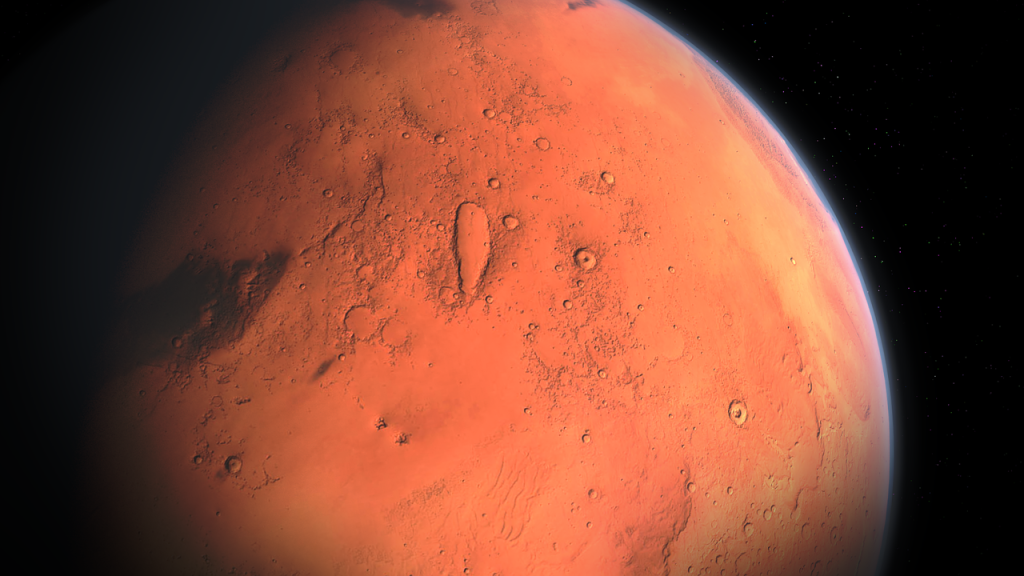One of the ultimate aims by both national space agencies and private companies is to send humans to Mars. It is a prospect that has so far remained out of reach, although there are indications that a human mission to Mars is becoming an increasing possibility in the not-too-distant future.
Here’s everything you need to know about Mars exploration up to this point as well as the future of crewed missions to the Red Planet:
The History of Uncrewed Missions to Mars
National space agencies began uncrewed missions to Mars in the 1970s with varying degrees of success, beginning with the Soviet Union Mars probe program. Mars 2 and Mars 3 were the first probes which successfully sent back large volumes of data and photos from Mars back to Earth in 1971, followed by the Mars 4 and Mars 5. The latter was the most successful of the Mars probe program, sending back 60 images to Earth.
Although it followed a few years later, the United States’ Viking program was far more effective. The two NASA probes were the first to achieve a soft landing on Mars’ surface as well as the first to take color photos, measure temperatures at the landing site, and observe pressure changes and movement of atmospheric gases.
After those milestones in the 1970s, it wasn’t until 1997 that NASA returned to Mars with the Mars Pathfinder, which produced further breakthroughs. These included taking more than 17,000 photos and sending the first remote-controlled rover to explore the landing site and collect chemical analyses of rocks and soil.
The next major step forward in Mars exploration occurred in 2003 with the European Space Agency’s (ESA) Mars Express and the Beagle 2 rover. Despite a litany of complications, the mission was the first to confirm the presence of water ice and carbon dioxide ice on Mars’ south pole. Shortly after, also in 2003, NASA launched the Mars Exploration Rover mission, which was the first to collect enough evidence to support the claim that liquid water was once present on Mars.
Future uncrewed missions to Mars include NASA’s Mars 2020. This endeavor will, among its many research tasks, begin the process of potential sample-return missions as the rover caches sample containers along its route. The launch is planned for July 2020. China, the UAE and the ESA also have Mars missions scheduled for 2020 and India is scheduled for 2024.
The Current Plans and Timeframe for Human Missions to Mars
In 2019, the Science and Technology Policy Institute (STPI) released a report which had been contracted by NASA to determine the financial and technical possibility of such a mission by 2033. According to the report’s authors, sending humans to Mars could be achieved by the late 2030s.
The report said that under all budgetary scenarios, a Mars 2033 orbital mission is unrealistic. The report went on to state, “our analysis suggests that a Mars orbital mission could be carried out no earlier than the 2037 orbital window without accepting large technology development, schedule delay, cost overrun, and budget shortfall risks.”
In the private sector, Mars missions are being led by SpaceX. The company’s CEO Elon Musk projects that its Starship could see its first commercial flight as early as 2021, although Musk is notable for his aggressive and often unfulfilled deadlines. That being said, SpaceX continues to astound with the technical progress they have made, especially with respect to heavy launch technology and reusability of first stage rockets.
The Obstacles Facing Human Missions to Mars
As NASA states on its website: “Getting astronauts to the Martian surface and returning them safely to Earth [. . .] is an extremely difficult engineering challenge.” Those challenges come from a variety of sources, from deep-space radiation and the effects of micro gravity to the stress of confinement and isolation inevitably experienced by astronauts undertaking a round trip that could take more than one year.
Meanwhile, the logistical challenges of preparing a launch by the projected year of 2037 will be dictated by the necessary advances in technology and the opportunities to sufficiently test these technologies in time. The STPI report suggests that such technologies would need to be tested by 2022 in order to meet the 2037 projection.
Then there are the costs associated with a human mission to Mars. As part of a wider effort that encompasses Mars missions, operations in low Earth orbit, the development of Mars surface systems, and a series of moon missions, it is estimated that the total costs through to 2037 will stand at around $217.4 billion. Those moon missions will include independent missions to the lunar surface as well as using the moon as a proving ground ahead of further missions to Mars.
The Goals of Human Missions to Mars
The initial motivation for sending a human crew to Mars will be research. Crewed missions would enable astronauts and scientists to collect valuable data to learn more about the Red Planet and to determine the possibility of future colonization. More data will also allow humans on Earth to create prototypes for tools and technologies that can assist with future Mars missions.
What was previously consigned to the imaginations of science fiction writers is becoming an increasingly plausible reality. Human missions to Mars look set to take place sooner rather than later. Once space agencies and private companies find solutions to current obstacles, the prospect of settling the Red Planet will seem like an increasingly attainable target.






